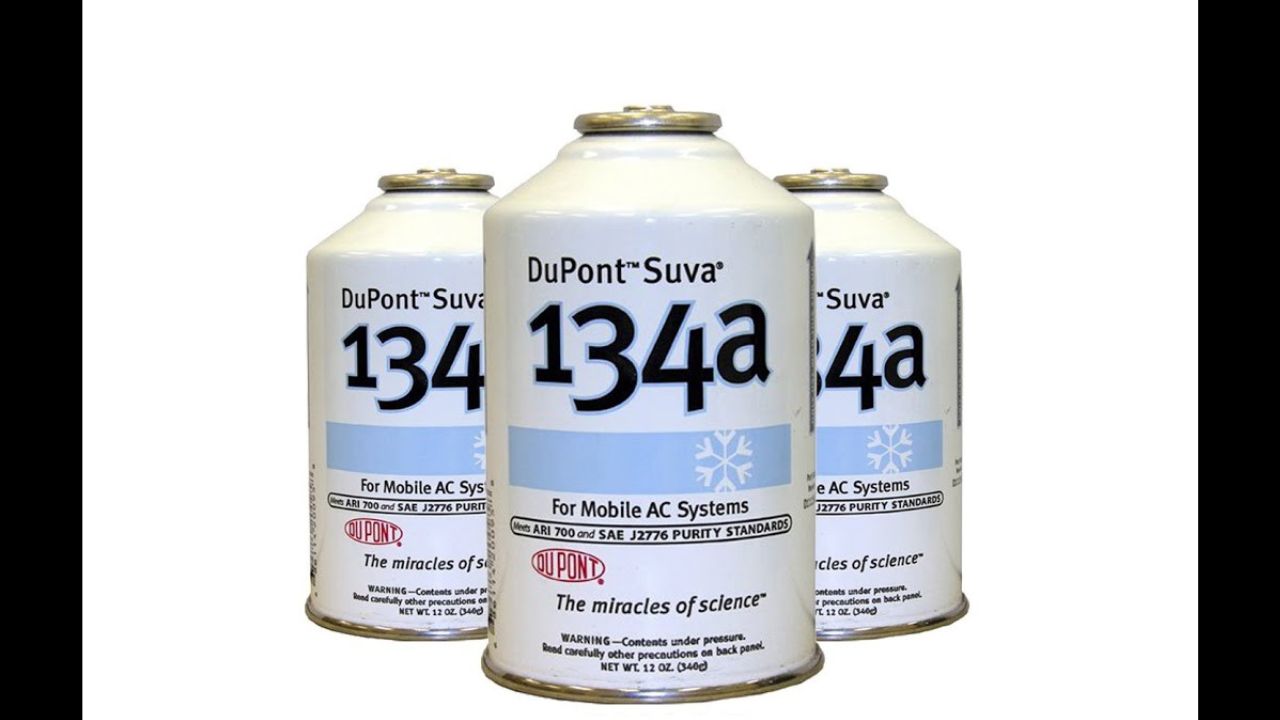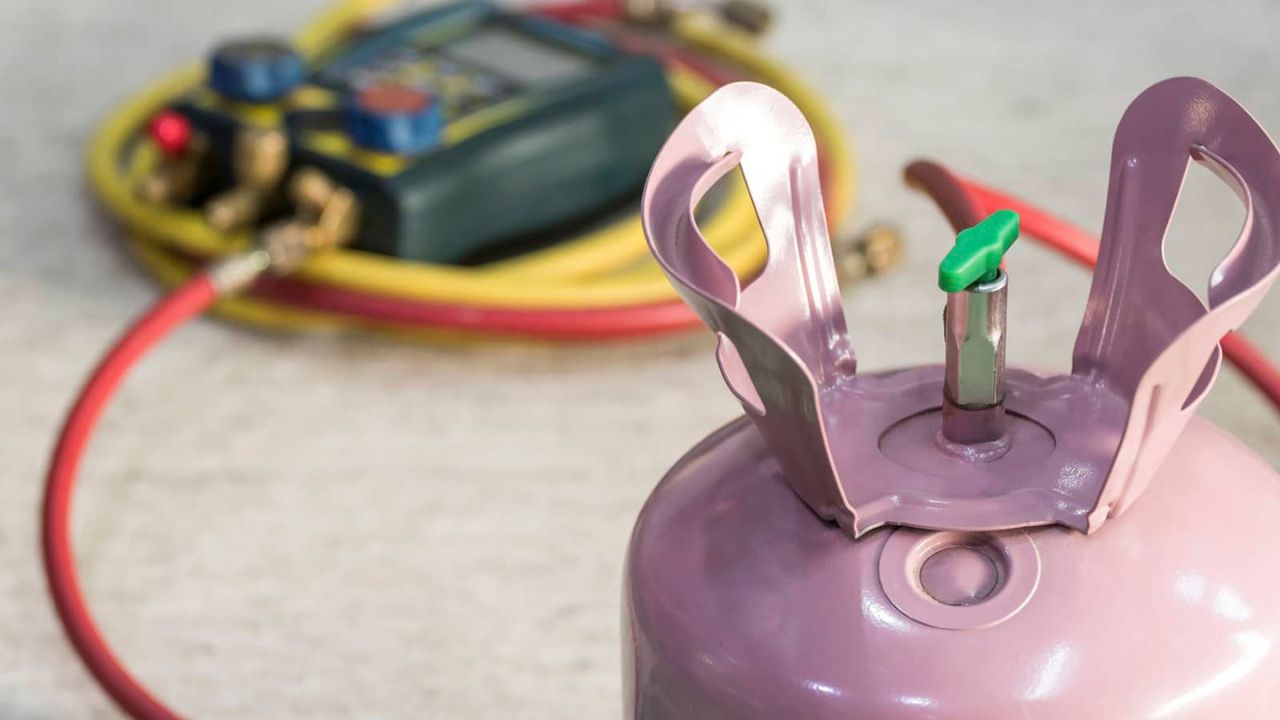If you own or work with older vehicles or appliances that use R12 refrigerant, you may be in a quandary. Freon, often known as R12, is being phased out due to its detrimental effects on the ozone layer. Finding a suitable replacement becomes crucial for maintaining your equipment’s functionality while adhering to environmental regulations. We’ll explore the best replacement for R12 refrigerant and discuss its benefits and considerations.
R12 Refrigerant Comprehension.
The best replacement for R12 Refrigerant, or dichlorodifluoromethane, was once widely used in air conditioning systems, refrigerators, and freezers. It was praised for its excellent cooling properties and stability. However, its production and use were banned in most countries due to its high ozone depletion potential (ODP) and contribution to global warming.
Factors to Consider When Choosing the Best Replacement for r12 Refrigerant.
Before delving into specific alternatives, it’s essential to consider several factors when selecting the best replacement for R12 Refrigerant:
- Compatibility: Ensure that the replacement refrigerant is compatible with your equipment and does not require significant modifications for proper operation.
- Environmental Impact: Look for refrigerants with low ozone depletion potential (ODP) and global warming potential (GWP) to minimize environmental harm.
- Performance: Evaluate the cooling efficiency and performance characteristics of the replacement refrigerant to ensure it meets your needs and requirements.
- Legality: Check local regulations and restrictions regarding the use of specific refrigerants to ensure compliance with the law.
Why Replace Refrigerant R12?
The best replacement for R12 Refrigerant, also known as Freon 12, has long been a cornerstone in various refrigeration and air conditioning applications due to its widespread use and versatility. It operates effectively across a broad range of conditions without degradation, simplifying the field of refrigeration and enhancing its utility significantly.
Unfortunately, The best Refrigerant R12’s chemical formula, CCl2F2, indicates that it is categorized as a chlorofluorocarbon (CFC). This substance has a very high potential to cause the upper atmosphere’s ozone layer to thin, which would exacerbate the greenhouse effect. Consequently, in accordance with the Montreal Protocol, the complete phase-out of R12 was mandated by 2021.
Finding suitable replacements for such a ubiquitous refrigerant has posed a considerable challenge. Nevertheless, researchers have identified a few viable alternatives to R12.

The Best Replacements for R12 Refrigerant.
The best replacements for R12 refrigerant include alternatives such as R134a, R404A, R407C, and R600a. These substitutes offer varying degrees of compatibility, environmental friendliness, and performance characteristics. R134a is commonly used in automotive air conditioning systems, while R404A and R407C are popular choices for commercial refrigeration. R600a, on the other hand, is a hydrocarbon refrigerant often found in household appliances. Each replacement option has its advantages and disadvantages, allowing users to select the most suitable alternative based on their specific needs and requirements.
R134a
R134a is one of the most common replacements for R12 refrigerant in automotive air conditioning systems. It has a lower ODP and GWP than R12, making it more environmentally friendly. While it may not provide the same level of cooling efficiency as R12, it is a cost-effective and readily available alternative.
R404A
A mixture of HFC refrigerants called R404A is often utilized in commercial air conditioning and refrigeration systems. In comparison to other options, it has a very high GWP but zero ODP. While it offers excellent cooling performance, its environmental impact has led to restrictions on its use in some regions.
R407C
R407C is another HFC refrigerant blend suitable for retrofitting R12 systems. It has a lower GWP than R404A and is often used in medium-temperature refrigeration applications. However, adjustments to equipment components and operating parameters may be required for optimal performance.
R600a
R600a, or isobutane, is a hydrocarbon refrigerant commonly used in household refrigerators and freezers. It has zero ODP and a low GWP, making it one of the most environmentally friendly alternatives to R12. While it may require equipment modifications to ensure safety and compatibility, it offers excellent cooling efficiency and energy savings.
How easy is Replacing R12?
Transitioning from R-12 to other refrigerants is relatively straightforward. Initially, the old R-12 must be evacuated from the system and properly recovered, adhering to EPA regulations that prohibit its release into the atmosphere. Following this, the lubricant within the refrigeration system, along with the filter and drier components, should be replaced.
Once these steps are completed, the system can be charged with the chosen alternative refrigerant. In some cases, minor adjustments to the settings of the expansion valve and other controls may be necessary to ensure optimal performance.
It’s important to note that alternative refrigerants are not compatible with the mineral oil typically used as lubricants with R-12 refrigerant. Therefore, when switching to new refrigerants, compressors should be filled with synthetic lubricants, such as alkylbenzene synthetic. To ensure thorough removal of the old oil, system flushing is required, or the residual amount of old oil should be at most 6% of the total lubricant volume within the system.

Replacement of R12 in Vehicles.
Many vehicles currently utilize R12 refrigerant in their air conditioning systems, but acquiring it has become increasingly difficult and costly. Fortunately, the most suitable alternative for vehicles is the R-134a refrigerant, which all vehicle manufacturers have approved as a replacement for R12. By adhering to proper replacement procedures, one can achieve the same level of cooling in their car as with the previous refrigerant.
Vehicle manufacturers generally refrain from using blends as alternative refrigerants due to the risk of disintegration under extreme operating conditions.
If you are a vehicle owner considering the best replacement for R12 Refrigerant, or dichlorodifluoromethane, was once widely used in air conditioning systems, refrigerators, and freezers. It was praised for its excellent cooling properties and stability. However, its production and use were banned in most countries due to its high ozone depletion potential (ODP) and contribution to global warming., it’s important to note that there is no direct replacement available. According to federal law, topping off the air conditioning system with a chemically different refrigerant than the original one is illegal. Therefore, the old refrigerant must first be removed from the system before being converted to an alternative refrigerant system.
When charging the system with R-134a, approximately 80–90% of the amount of R12 refrigerant required by the system is needed.
Two common lubricants used in retrofitted R12 systems are PAGs and esters. PAGs are hygroscopic, meaning they tend to absorb atmospheric moisture, limiting their lubricating capacity. Many manufacturers opt for esters, which are less prone to moisture absorption.

Conclusion
Choosing the best replacement for R12 refrigerant depends on various factors, including compatibility, environmental impact, performance, and legality. While several alternatives are available, each has its own set of benefits and considerations. It’s crucial to thoroughly investigate and assess your alternatives in order to choose the best replacement for your unique demands and specifications.
FAQ
Is it Legal to Use R12 Refrigerant?
In most countries, the production and use of R12 refrigerant have been banned due to its harmful environmental effects. It is illegal to use R12 refrigerant in most applications.
What is the Safest Refrigerant?
R-143A, also known as trifluoroethane, is a component of the R-404A refrigerant mixture. It is non-toxic and does not lead to corrosion.
R-404A is a blended hydrofluorocarbon (HFC) nonflammable refrigerant with low toxicity. It consists of R-125, R-134A, and R-143A.
What is the Latest Refrigerant on the Market?
R-454b serves as a more environmentally friendly substitute for R-410a. This shift within the industry will significantly reduce global warming potential.
What Refrigerant is Commonly Used in Modern HVAC Systems?
With the phase-out of Freon, contemporary HVAC systems now employ a refrigerant called Puron® or R-410A, an HFC (hydrofluorocarbon). Introduced in 1996, R-410A is both more efficient and less environmentally harmful than its predecessors. It is widely utilized in the majority of today’s HVAC systems.
Can I Mix Different Refrigerants in My System?
Mixing different refrigerants can damage systems and cause performance issues. It is not recommended, and it may be illegal in some jurisdictions.

